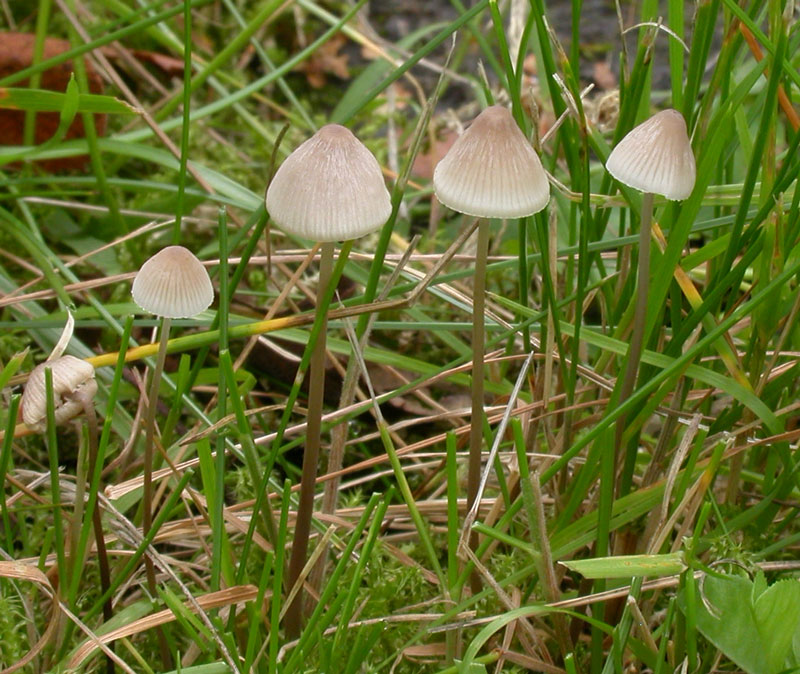Mycena filopes
Mycena filopes
Description
Cheilocystidia.
Cap 5-20 mm across, conical to campanulate, often shallowly umbonate, translucent-striate, shallowly sulcate, pruinose, glabrescent, finely innate-fibrillose, with the fibrils gradually splitting, giving the surface a rimose aspect much in the manner of some species of Inocybe, and imparting a silvery lustre to the cap when drying out, hygrophanous, very pale to almost white, greyish, grey-brown to very dark brown, at the centre darker, paler to almost whitish towards the margin. Gills 16-23 reaching the stem, adnexed, rarely decurrent with a small tooth, whitish to pale grey or with a brownish tinge, as a rule not turning pinkish. Stem 40-155 x 0.5-2 mm, cylindrical, equal, fairly firm, at first entirely pruinose or minutely puberulous, glabrescent for the greater part, pale to fairly dark grey-brown, paler to almost white at the apex, the base covered with long, coarse, flexuous, whitish fibrils. Odour indistinctive when fresh, of iodoform on drying out. Basidia 20-28 x 8-12 µm, clavate, mostly 2-spored, less frequently 4-spored. Spores 9-11.5 x 5.5-6.5 µm (2-spored basidia), or 8-9 x 5.5-6.5 µm (4-spored basidia), pip-shaped, amyloid. Cheilocystidia 14.5-30 x 7-18 µm, forming a sterile band, sessile (often the majority) to stipitate, ellipsoid, obovoid, obpyriform, clavate, almost spheropedunculate to somewhat irregularly shaped, covered with fairly few simple to somewhat branched cylindrical excrescences up to 20 x 1.5 µm. Pleurocystidia absent or rare, similar. Hyphae of the pileipellis 1.8-2.7 µm wide, densely covered with warts or short cylindrical excrescences. Hyphae of the cortical layer of the stem diverticulate. Caulocystidia (terminal cells), abundant in the apical part of the stem, clavate to subglobose, more or less curved outwards, covered with warts. Clamps abundant in both 2- and 4-spored forms.
Ecology and distribution
Solitary or in small groups in mossy lawns, under conifers as well as deciduous trees, on vegetable debris, more rarely on decaying wood, not infrequently also on moss-covered tree trunks. Summer to autumn. Common all over the country.


